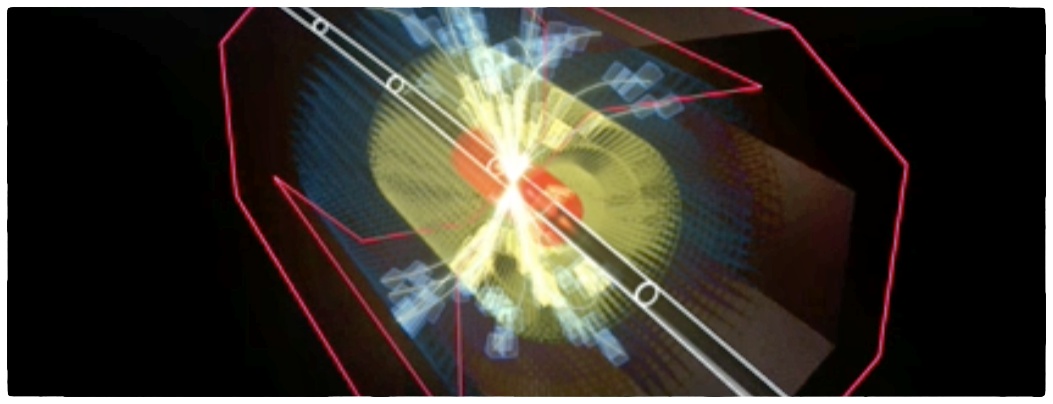HotLHC : Hot and dense QCD in the LHC era
The whole Universe was in a hot and dense state of matter made of quarks and gluons some microseconds after the Big Bang. This state of matter, commonly known as the Quark Gluon Plasma, is being produced at the Large Hadron Collider (LHC) by smashing heavy atomic nuclei in high energy collisions. The HotLHC project aims to make the essential contributions to interpret the data and fully exploit the new possibilities of the LHC to characterize these unexplored domains of hot and dense matter.
The dynamics of the quarks and the gluons, the elementary constituents of the protons, neutrons, and other hadrons is governed by Quantum Chromo-Dynamics (QCD). These constituents cannot be set appart except in rare conditions of extremely high temperatures or densities, as predicted by QCD. By smashing heavy atomic nuclei, the LHC experiments produce temperatures exceeding more than one hundred thousand times those at the center of the Sun. A smaller collider, the Relativistic Heavy Ion Collider, at Brookhaven National Laboratory in the US characterized a state of a bit more than one half of this temperature as a “perfect liquid”. The project proposes two areas of research to characterize the properties of the corresponding medium created at the LHC: the study of “jets” and the study of smaller systems.
Jets: the self-produced explorers.
An excellent way of observing the properties of a medium is to shot a small object and look what happens. We cannot shot particles against the quark gluon plasma as its lifetime in laboratory is just infinitesimal from a technological point of view. Luckily, however, these probes, fast quarks and gluons, are produced by elementary processes before the medium is created and are bound to traverse it and interact. Jets are the result of the branching process of these fast quarks and gluons. In the quantum world, this branching process and the corresponding jet structure is influenced by quantum coherence effects. The presence of a medium modifies both the branching pattern and the quantum behavior of the corresponding multi-particle entangled state. Mastering these mechanism is one of the main goals of the research project.
Smaller systems: how small is small?
A prerequisite to produce a medium is that the particles involved present some type of collective behavior. We know that collective behavior is very important in “big” systems as, for example, a lead nucleus smashing another lead nucleus at the LHC energies. The question is, how much of this collective behavior is present in smaller systems and what is its origin. For that, the LHC produced in early 2013 asymmetric collisions, the collisions of protons and lead nuclei. This control experiments are essential for a correct interpretation of the results in terms of hot and dense matter. On the other hand, the most recent data could indicate that a hot QCD medium, albeit small, could also be present in proton-nucleus collisions: the small proton “smashes” the heavy nucleus. This would be the most exciting possibility --- the production of the smaller liquid, of the size of a proton, ever created --- and is being fully investigated at present.
The project and the working plans

The HotLHC Project is funded by the European Research Council Starting Grant (Consolidator) reference ERC-2011-StG-279579. It is hosted by the Universidade de Santiago de Compostela (Galicia-Spain) and CERN (Geneva, Switzerland).

